




| Black Swan (Cygnus atratus (Latham, 1790)) |





|
|
Scientific name: Cygnus atratus (Latham, 1790) Common name: Black Swan French name: Cygne noir Order: Anseriformes Family: Anatidae Size: Body size: 110 to 142 cm; Weight: 3.7 to 9 kg; Wingspan: 160 to 200 cm. Females are slightly smaller than males. Habitat: Lakes, rivers, marshes with underwater or emergent aquatic vegetation. Black Swans are seen both on fresh and brackish water bodies. Food: Plants generally collected underwater using its very long neck. The Black Swan can also feed on dry land but is uncomfortable there with its very short legs. Nesting: The Black Swan nests in colonies or isolated. The nest, located on the ground near water or sometimes floating, is a large pile of plant debris stuck together with mud. There are usually 5 to 6 eggs per clutch. Migration: Black Swans do not perform regular migrations but have a rather nomadic behaviour, moving for example to temporary bodies of water. Geographic area: Australia and Tasmania, introduced to New Zealand. Black Swans have also been introduced to many other countries as ornamental birds. |
The Black Swan has, as its common name indicates, an almost completely black plumage. The wing alula as well as the primary and secondary flight feathers are white but are only really visible when the wing is deployed. The short legs are black. The neck is very long. The bill is red with a whitish subterminal band and a pinkish tip. Juveniles have a brown plumage with paler feather tips. |
| [To know more about the Black Swan] [Next picture] [Top] |
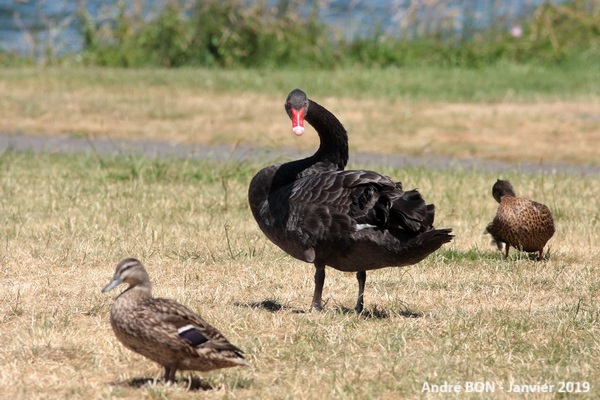
|
This Black Swan walked out of water near Lake Taupo. We can clearly see its very long neck and short legs. |
| [To know more about the Black Swan] [Next picture] [Previous picture] [Top] |
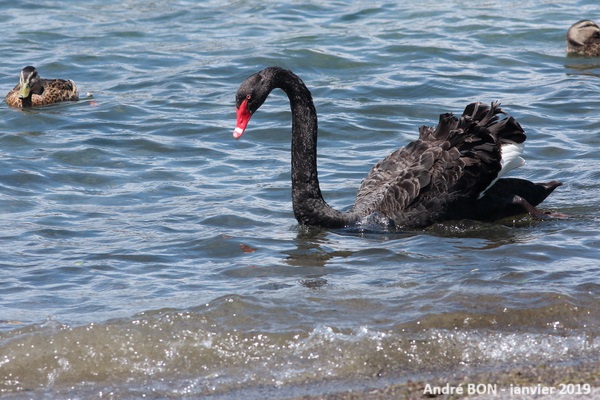
|
The white wing feathers are hardly visible when the wings are folded. |
| [To know more about the Black Swan] [Next picture] [Previous picture] [Top] |
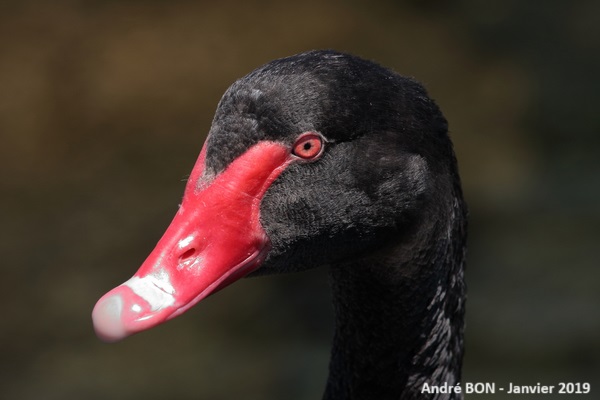
|
The Black Swans were not very shy and it was easy to take close-up photos. Here is a view of the red bill, barred with white just before the pink tip. |
| [To know more about the Black Swan] [Next picture] [Previous picture] [Top] |
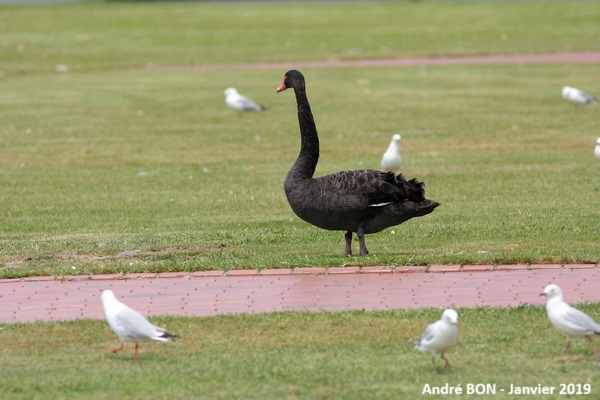
|
Long neck and short legs. |
| [To know more about the Black Swan] [Previous picture] [Top] |
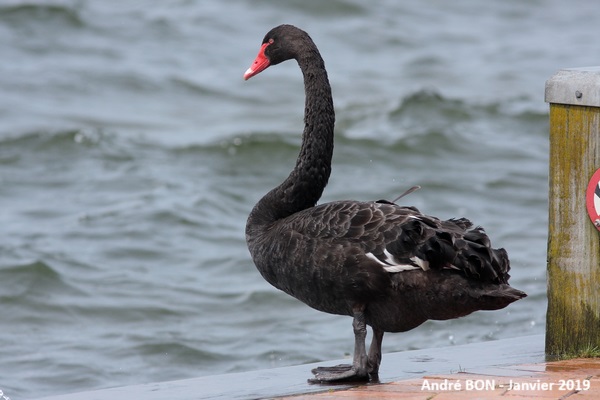
|
Short legs and long neck. |